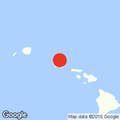
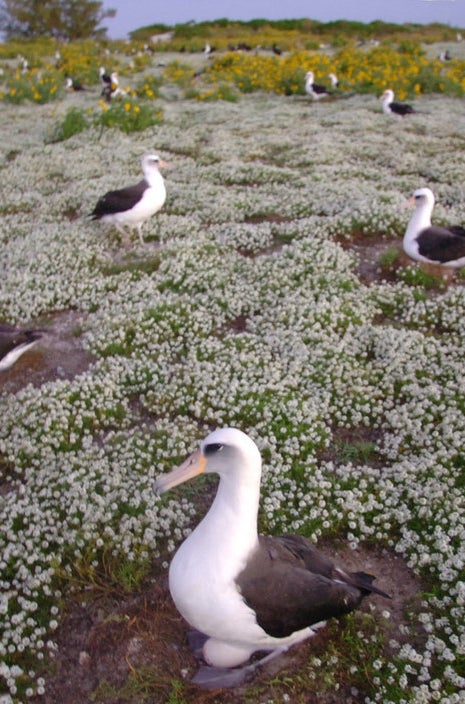

HONOLULU — The vast ocean surrounding the remote western portion of the Hawaiian archipelago has become the focus of a fierce debate in the state where lawmakers and longline fishers have been pitted against conservationists and Native Hawaiian groups who hope the president will designate it as the world’s largest marine reserve.
Earlier this summer, US Sen. Brian Schatz sent a proposal to President Barack Obama to greatly expand the Papahānaumokuākea Marine National Monument (PMNM), an existing protected area established 10 years ago by President George W. Bush.
The current monument covers 139,800 square miles in the Northwestern Hawaiian Islands, an area nearly the size of California, and is home to some of the world's most extensive coral populations, at least 7,000 marine species, and 22 types of seabirds. When it was established in June 2006, it was the largest protected area in the world, but now ranks 10th.
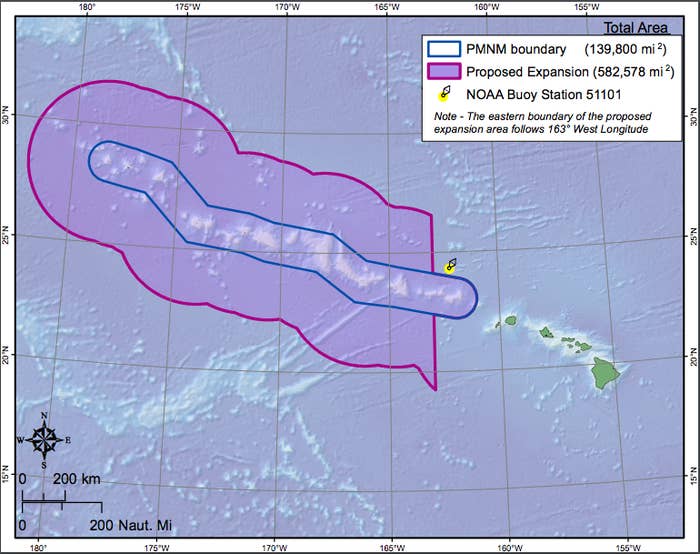
Under Schatz’s proposal the monument would expand to 582,578 square miles — four times its current size — and would include almost the entire exclusive economic zone of the Northwestern Hawaiian Islands. While advocates say the expanded protection will better safeguard endangered species, preserve biodiversity, and fight climate change, opponents argue that it would significantly restrict their access to certain fish and hinder the state's economic well-being.
In May, 30 state lawmakers, including Hawaii House Speaker Joe Souki and Senate President Ron Kouchi, signed a letter asking Obama not to expand the monument and questioning his authority to use the Antiquities Act. The law, passed in 1906, gives the president the power to designate national monuments with the stroke of a pen, and is among the most controversial tools used to set aside land.
“Without sufficient scientific and empirical data and evidence, this arbitrary expansion would be in direct violation of the Antiquities Act," the letter read.

The lawmakers said an expansion of the preserve would cut Hawaii's commercial fishing industry by 8% and would mean 2.16 million fewer pounds of fish, resulting in an estimated $6.8 million loss.
The letter was originally circulated by Rep. James Tokioka, who represents east Kauai, and Kouchi, who represents Kauai and Niihau, the two main islands closest to the monument where commercial fishers have opposed the proposal. In August, Kouchi sent a letter saying he is now in support of the expansion, as long as it excludes the southeastern boundary of PMNM.
The proposal followed a call in February from seven prominent Native Hawaiians, including Polynesian Voyaging Society President Nainoa Thompson and the Department of Hawaiian Home Lands Deputy Chair William Aila Jr., to expand Papahānaumokuākea. Their letter called Obama "an island boy from Hawaii," who understands the significance of the ocean.
“The best available science indicates that expanding the PMNM will strengthen an ecosystem that sustains tuna, swordfish, sharks, seabirds, sea turtles, and Hawaiian monk seals,” Sen. Schatz wrote in his proposal to the president. "The expanded region contains significant bio-cultural resources and archaeological sites that further justify use of the Antiquities Act."
In response to Sen. Schatz, Obama sent representatives from the White House Council on Environmental Quality to Hawaii to meet with local leaders, Native Hawaiian groups, scientists, and fishers.

A rally held last month in Honolulu to protest the proposal drew about 200 people, including local chef Nico Chaize, who said the expansion would lead to higher food prices and a reliance on imported frozen fish. Hawaii residents consume, on average, about 37 pounds of seafood per person — more than twice the national consumption.
Bigeye tuna are the most popular commercial catch from Hawaii’s waters and is sold as ahi, sashimi, or poke. The giant fish are an apex predator classified as a vulnerable species by the International Union for Conservation of Nature, which said between 1992–2007 bigeye tuna’s global population declined by 42%.
Former Hawaii Gov. George Ariyoshi, speaking at the rally, said it was important the state be allowed to make its own decisions and that the federal government should not "tell us what to do."
Ariyoshi, along with former Hawaii Gov. Ben Cayetano and former US Sen. Daniel Akaka, a Native Hawaiian, wrote a letter in July opposing the expansion, noting an economic impact study had not been conducted.
"Hawaii is the only State in the union comprised of small islands surrounded by the ocean and remotely located thousands of miles from any other land mass," the letter said. "We depend on the ocean for food, livelihood, recreation, and the perpetuity of traditional native Hawaiian cultural practices."
Jim Cook, vice president of Hawaii fishing company Pacific Ocean Producers and an organizer of the rally, told BuzzFeed News that the expansion would be a "drastic step" that would hinder access to one of Hawaii's most important natural resources.


"The Antiquities Act gives the president the ultimate ability to with the stroke of a pen declare this area off-limits," Cook said. "He will have declared 60% of the economic zone of the state of Hawaii off-limits."
The Western Pacific Regional Fishery Management Council (WestPac), a Honolulu-based council established by Congress to manage offshore fisheries, also opposed the proposed expansion. The federal government needs to "conduct a public, transparent, deliberative, documented, and science-based process that includes ... socioeconomic costs and benefits from monument expansion on marine resources, residents of Hawaii, and the nation," WestPac coordinator Eric Kingma told BuzzFeed News.
Kingma also objected to the sweeping power of the Antiquities Act, saying it "provides no room for adaptive management as only another president or Congress can make changes to a monument designation."

The proposal to expand Papahānaumokuākea Marine National Monument includes a provision to ensure Native Hawaiians are allowed a role in making policy decisions about the area and access in order to assist with resource management. The Office of Hawaiian Affairs (OHA), a public agency governed by an elected board of trustees that works for Native Hawaiians, would be a co-trustee along with the Department of Commerce, the Department of the Interior, and the state.
"The Northwestern Hawaiian Islands is a very significant cultural region," Keola Lindsey, OHA’s Papahānaumokuākea program manager, told BuzzFeed News. "It’s the region where in traditional belief life emerged from and the spirits returned to after death."
Ancient Hawaiians used the area for at least 500 years as an ocean pathway to travel up and down the Hawaiian archipelago. Cultural sites are still found on two islands, Nihoa and Mokumanamana.
“It had a very prominent role not just during the Hawaiian Kingdom era, but also during traditional times where voyages to the Northwestern Hawaiian Island were a very important political act for the ruling chiefs,” Lindsey said.
Other historic sites are believed to exist in the proposed expansion area, including six ships lost at sea during the World War II Battle of Midway. Advocates say expanding the national monument would protect the one known shipwreck, and would potentially shield the still-undiscovered wrecks.
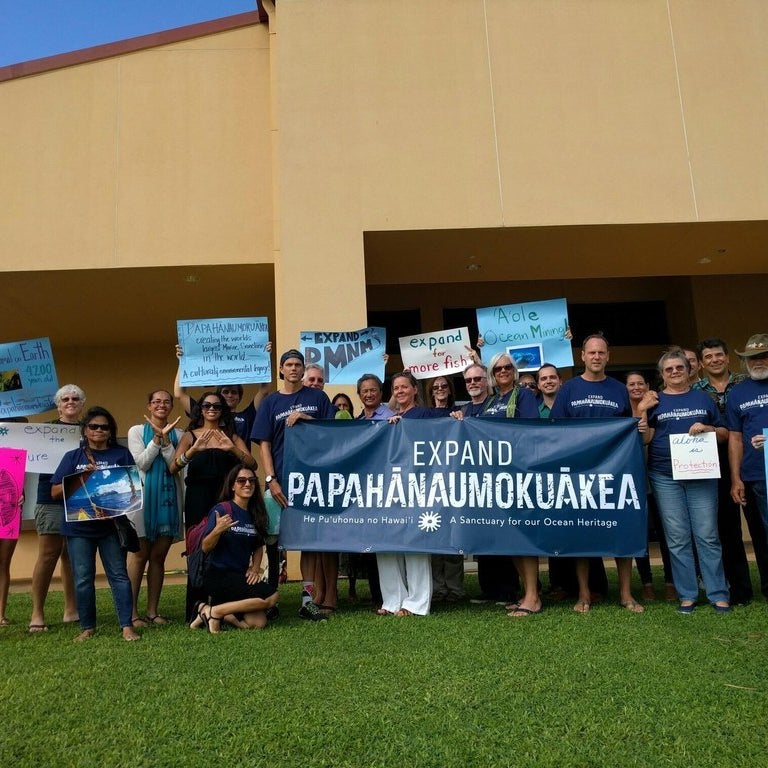

The National Oceanic and Atmospheric Administration held a pair of public meetings in Oahu and Kauai this month on the proposal, drawing hundreds of people, a majority of whom were supportive of a monument expansion.
Narissa Spies, a PhD candidate in the University of Hawaii's biology department and a Native Hawaiian from a fishing family on the Big Island, told BuzzFeed News she supports the expansion after witnessing the depletion of fisheries and sees the protected area as a way to preserve marine life for the future.
“The claim from the opposition, WestPac, is that there hasn’t been a public process and that there’s no transparency, but I think that’s been put to bed because we just had two public meetings where the community was allowed to come out and voice their concerns," Spies said. "I was in that audience," she added, saying at least three-fourths of the crowd was in support of the expansion of the marine monument.
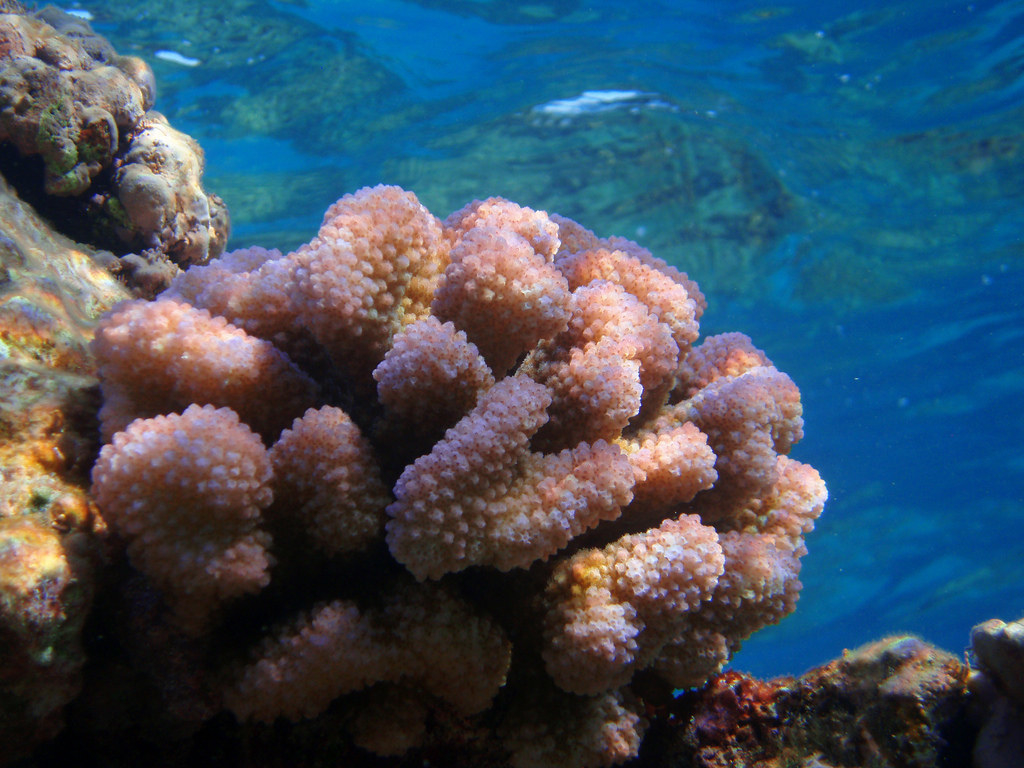
In June, scientists attending the international Coral Reef Symposium in Honolulu published a letter to Obama in support of the expansion with more than 1,500 signatures. The letter emphasized the unique location of the coral reefs and their genetic biodiversity.
"For the diversity of species and for the diversity of habitats in the deep ocean, this really is an incredibly wise move as a legacy for the future," University of Hawaii marine biologist Robert Richmond, who specializes in coral reefs and signed the letter at the symposium, told BuzzFeed News. "In the shallow water, about 25% of the species have been identified as endemic, meaning only found in Hawaii and nowhere else in the world, but as you go to deeper water that approaches 100%."
Earlier this year, Obama designated new monuments in California's desert, creating the second largest desert preserve in the world. The year before, he created monuments using the same act in Nevada, Texas, and California.
Advocates hope the president will make an announcement on the expansion at the International Union for Conservation of Nature's World Conservation Congress held at the beginning of September in Honolulu.
"I'm not a betting guy," Richmond said about the possibility that Obama would make an announcement soon. "But there are a number of people indicating that it's likely Obama will be coming [to the World Conservation Congress] and the hope is that while he's here on home territory, he's willing to make a bold announcement."

